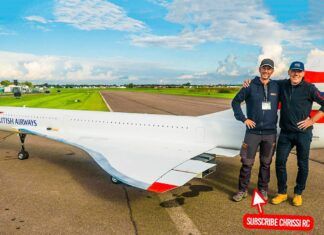
A faulty angle-of-attack sensor appears to have incorrectly activated the MCAS stall-protection system on the Boeing 737 MAX 8 that crashed in Ethiopia on March 10, according to sources briefed on the flight data recorder readout. If confirmed in the final report, that would make the accident a repeat of the October 2018 crash of Lion Air’s MAX 8 in Indonesia.
Sources briefed on the FDR readout told The New York Times and other outlets that the finding confirms a systemic design flaw in Boeing’s execution of MCAS. Last week, the company revealed that it has recast the MAX software to incorporate AoA data from the airplane’s two sensors, not just the single sensor that previously fed the system.
Boeing added MCAS—Maneuvering Characteristics Augmentation System—to the MAX because the airplane’s forward-mounted engines tend to create a pitch-up moment when the aircraft is flown at high angles of attack and load factors. MCAS is an automatic background envelope-protection system that rolls in nose-down stabilizer trim when the aircraft is flown at high AoA with the autopilot off and the flaps up. It’s intended as an anti-stall system.
The Lion Air preliminary accident report revealed that MCAS was active during the crash sequence and trimmed more than 20 times as the pilots struggled to counter the nose-down force. The flight data from that crash revealed repeated pitch and altitude excursions and based on ADS-B data, the same pattern occurred in the Ethiopian Airlines crash.
“Generally speaking, aviation components are highly reliable,” Mel McIntyre, a retired Boeing engineer who worked with sensor systems told the Times. “But everything can fail. Nothing is invincible,” he added.
The FAA allowed Boeing to certify the system with single AoA input because it evidently believed a sensor failure would not be a catastrophic event. Boeing has been widely criticized for not making pilots and operators of the MAX aware of MCAS. Failure of the system presents as an intermittent runaway trim abnormal, which pilots are trained to counter by using the aircraft’s stab trim cutout switches. It’s not known if the Ethiopian crew did this, but the airline said both pilots had been briefed in detail following the Lion Air crash.
Meanwhile, more than 350 MAX series aircraft remain grounded throughout the world. Southwest Airlines, which operates 34 MAX 8 airplanes, has planned its schedules at least through May without using the airplanes.

































